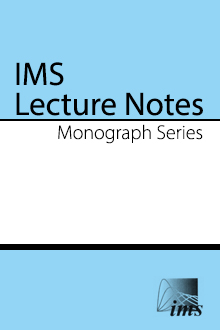Abstract
We consider zero-range processes in $\Z^d$ with site dependent jump rates. The rate for a particle jump from site $x$ to $y$ in $\Z^d$ is given by $\lambda_x g(k) p(y-x)$, where $p(\cdot)$ is a probability in $\Z^d$, $g(k)$ is a bounded nondecreasing function of the number $k$ of particles in $x$ and $\lambda = \{\lambda_x\}$ is a collection of i.i.d. random variables with values in $(c,1]$, for some $c>0$. For almost every realization of the environment $\lambda$ the zero-range process has product invariant measures $\{\nlv: 0\le v \le c\}$ parametrized by $v$, the average total jump rate from any given site. The density of a measure, defined by the asymptotic average number of particles per site, is an increasing function of $v$. There exists a product invariant measure $\nlc$, with maximal density. Let $\mu$ be a probability measure concentrating mass on configurations whose number of particles at site $x$ grows less than exponentially with $\|x\|$. Denoting by $S_{\lambda}(t)$ the semigroup of the process, we prove that all weak limits of $\{\mu S_{\lambda}(t), t\ge 0 \} $ as $t \to \infty$ are dominated, in the natural partial order, by $\nlc$. In particular, if $\mu$ dominates $\nlc$, then $\mu S_{\lambda}(t)$ converges to $\nlc$. The result is particularly striking when the maximal density is finite and the initial measure has a density above the maximal.
Information
Digital Object Identifier: 10.1214/074921707000000300


